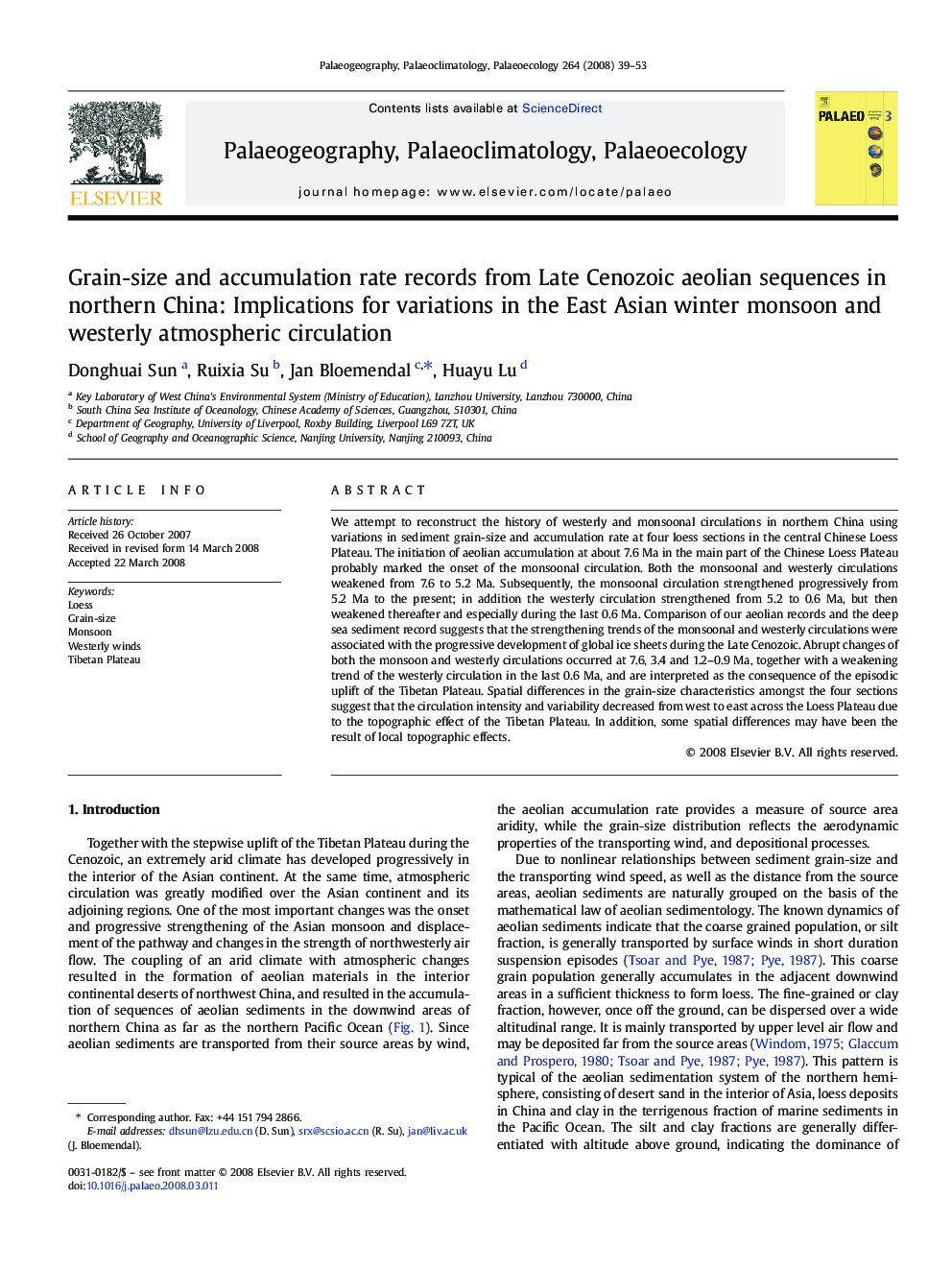| Article ID | Journal | Published Year | Pages | File Type |
|---|---|---|---|---|
| 4468576 | Palaeogeography, Palaeoclimatology, Palaeoecology | 2008 | 15 Pages |
We attempt to reconstruct the history of westerly and monsoonal circulations in northern China using variations in sediment grain-size and accumulation rate at four loess sections in the central Chinese Loess Plateau. The initiation of aeolian accumulation at about 7.6 Ma in the main part of the Chinese Loess Plateau probably marked the onset of the monsoonal circulation. Both the monsoonal and westerly circulations weakened from 7.6 to 5.2 Ma. Subsequently, the monsoonal circulation strengthened progressively from 5.2 Ma to the present; in addition the westerly circulation strengthened from 5.2 to 0.6 Ma, but then weakened thereafter and especially during the last 0.6 Ma. Comparison of our aeolian records and the deep sea sediment record suggests that the strengthening trends of the monsoonal and westerly circulations were associated with the progressive development of global ice sheets during the Late Cenozoic. Abrupt changes of both the monsoon and westerly circulations occurred at 7.6, 3.4 and 1.2–0.9 Ma, together with a weakening trend of the westerly circulation in the last 0.6 Ma, and are interpreted as the consequence of the episodic uplift of the Tibetan Plateau. Spatial differences in the grain-size characteristics amongst the four sections suggest that the circulation intensity and variability decreased from west to east across the Loess Plateau due to the topographic effect of the Tibetan Plateau. In addition, some spatial differences may have been the result of local topographic effects.
